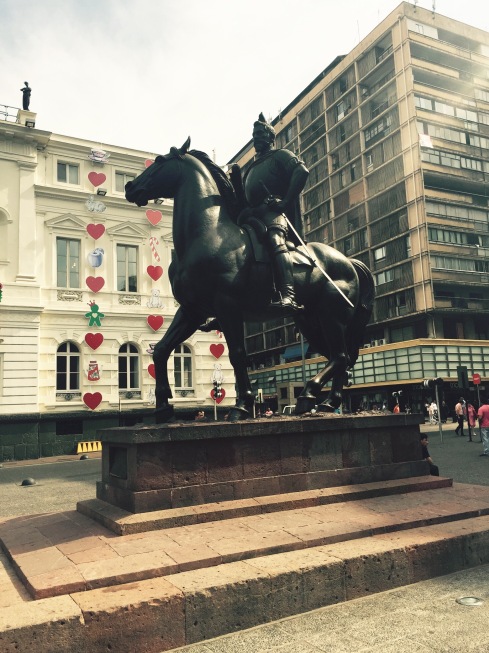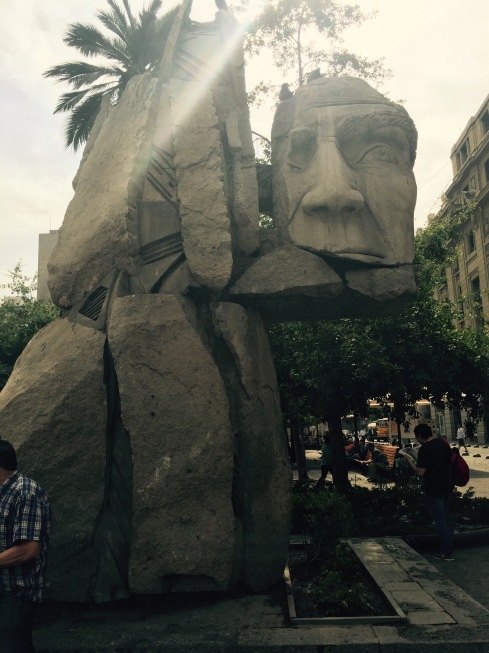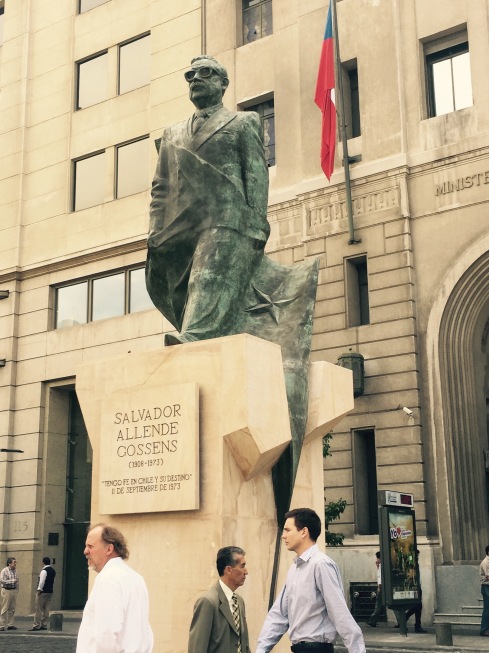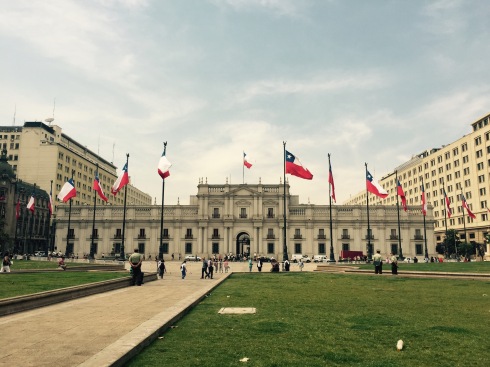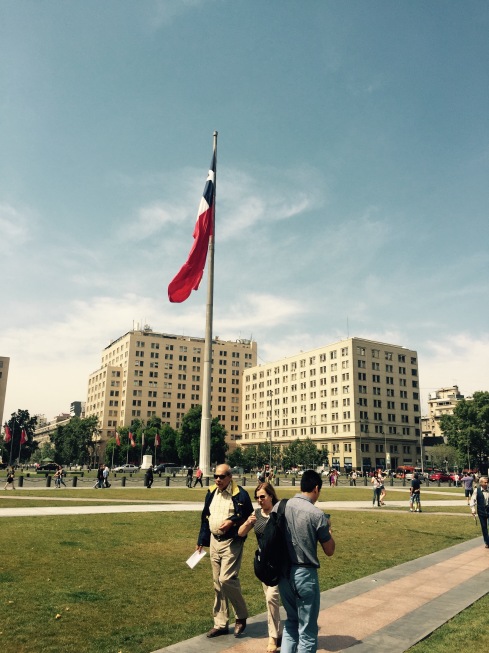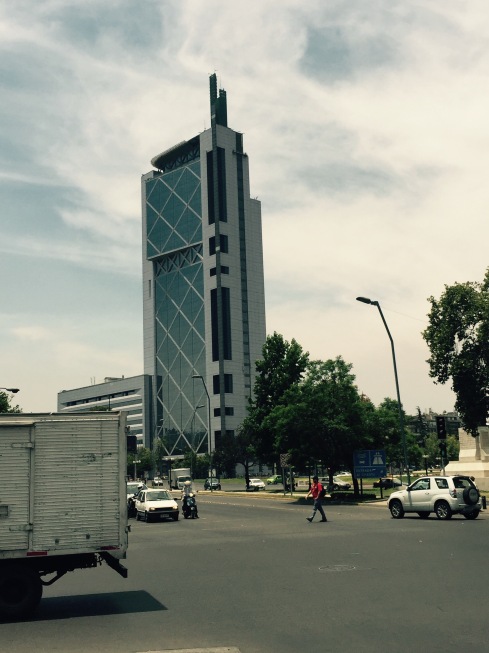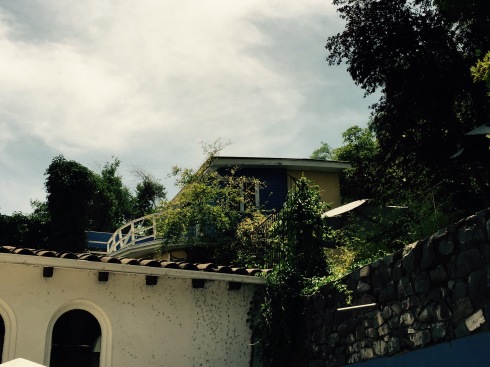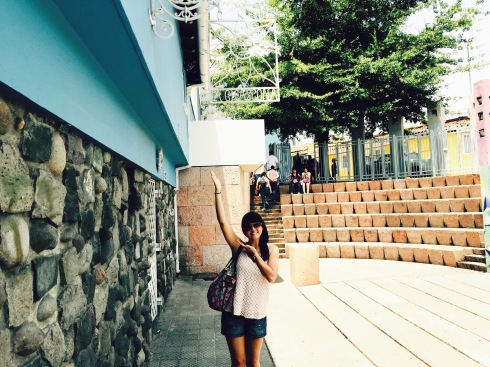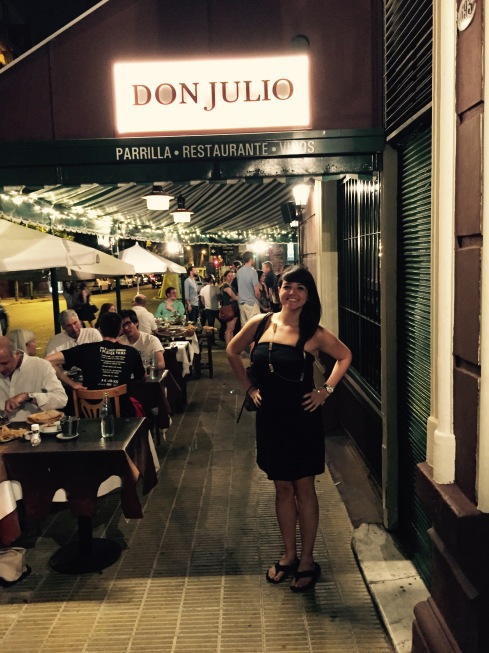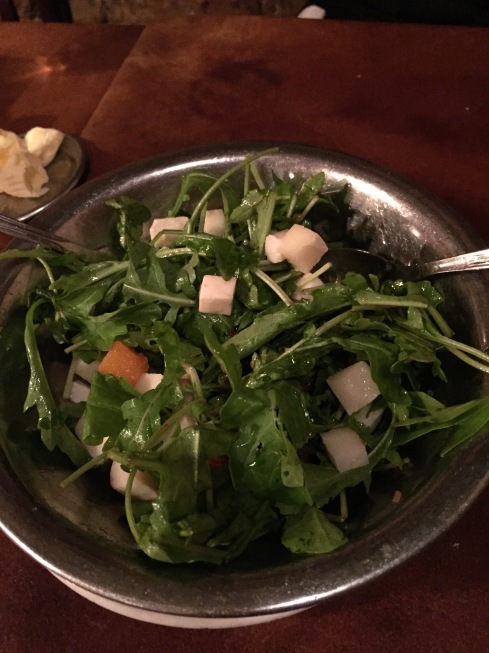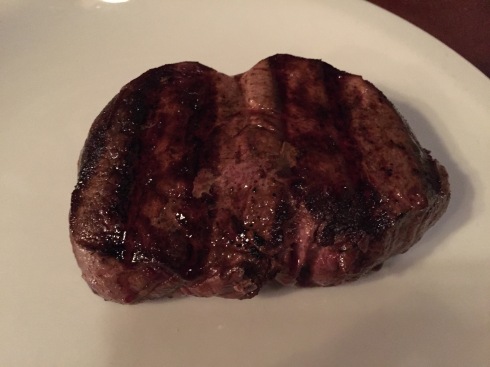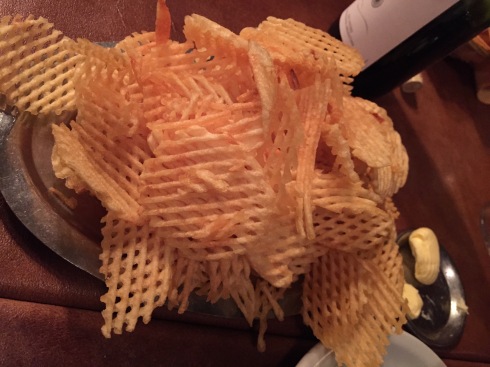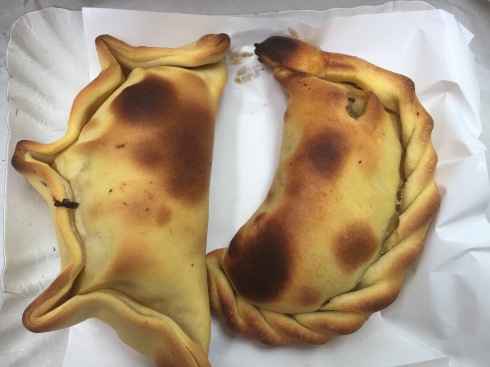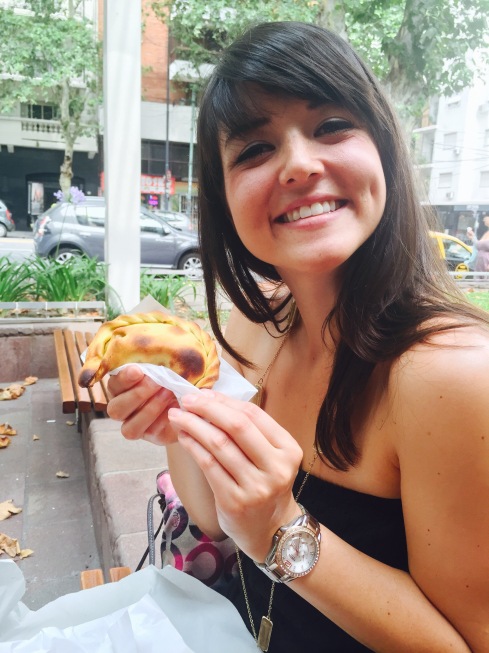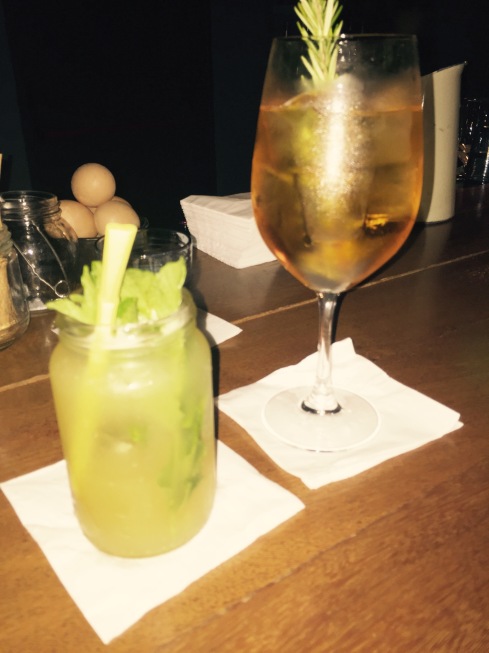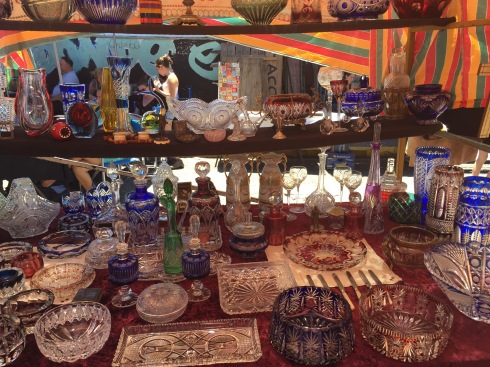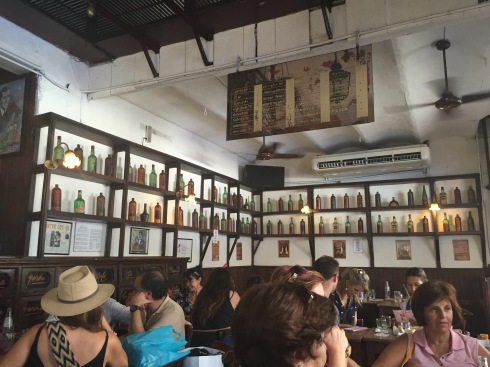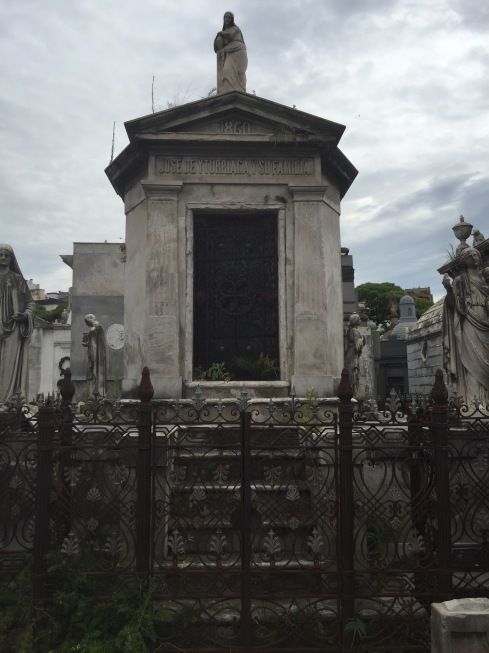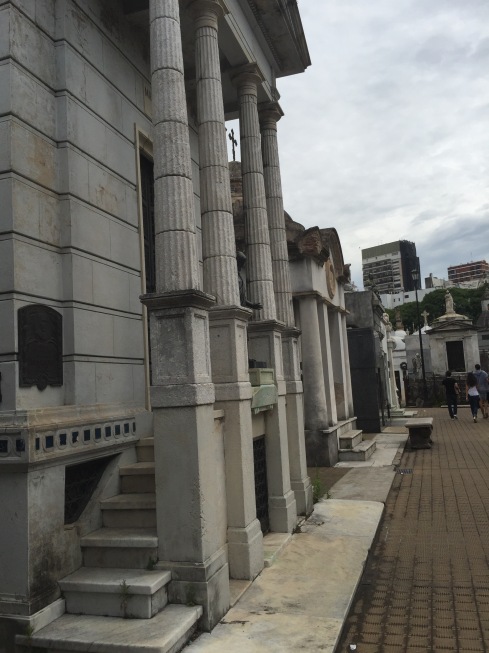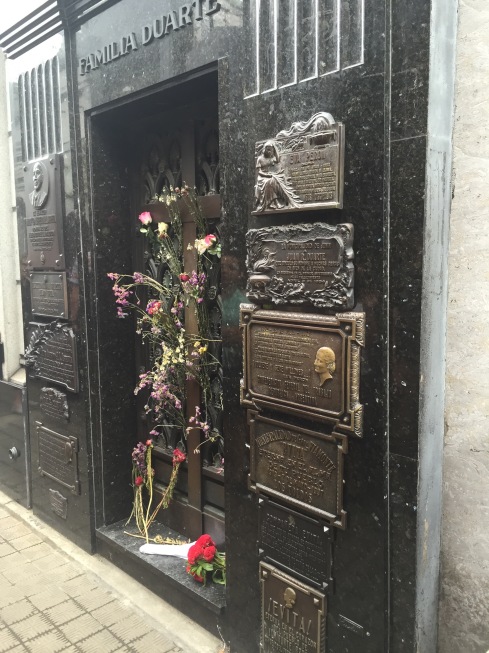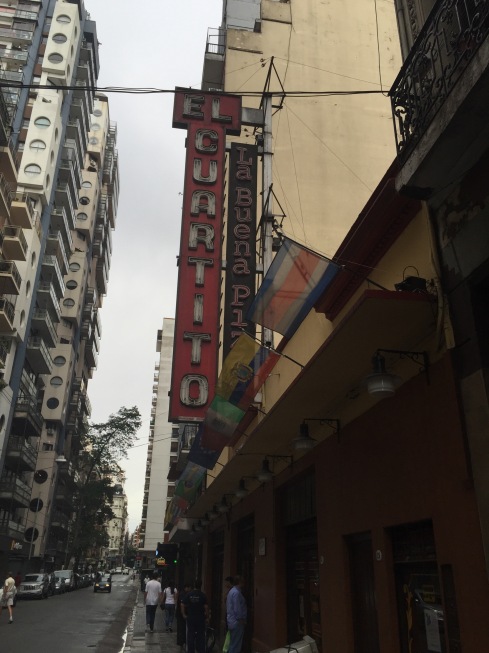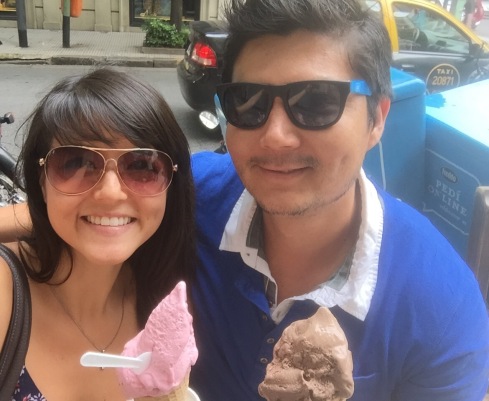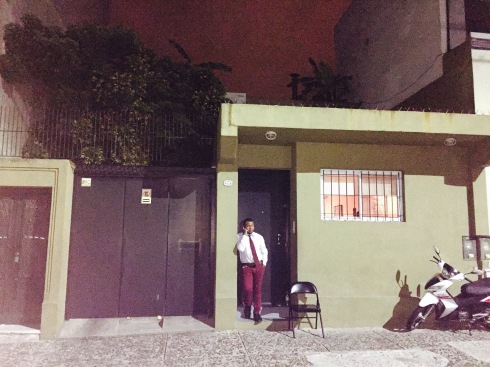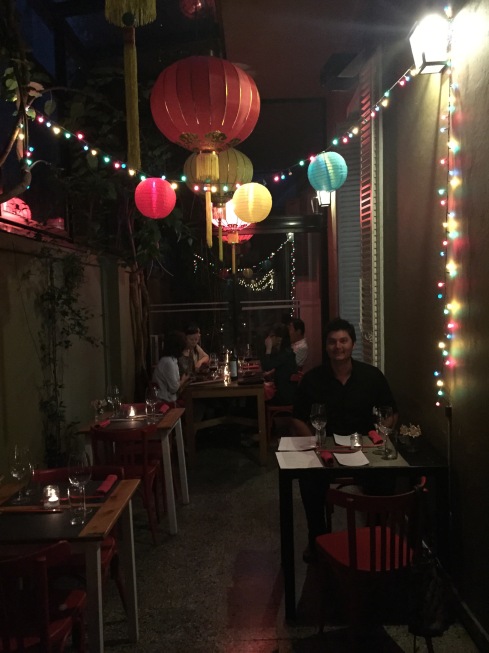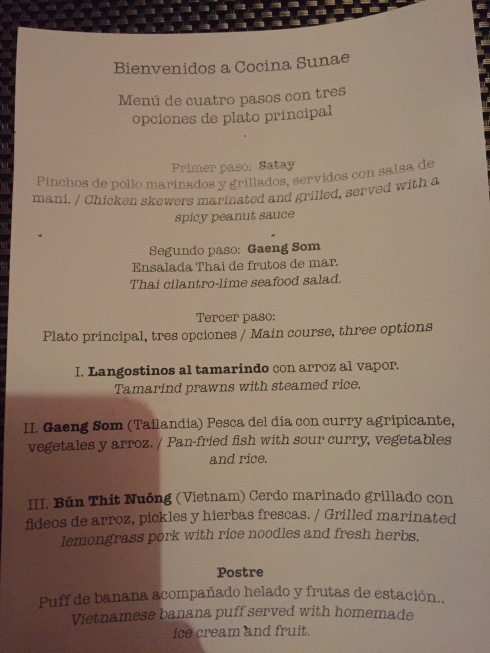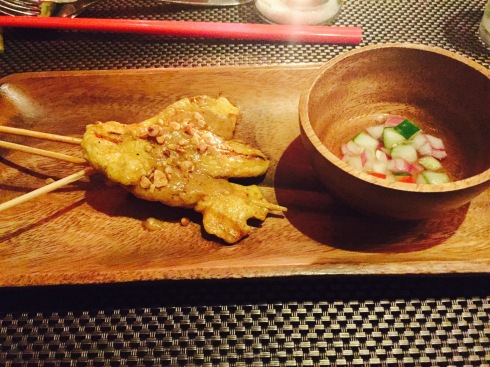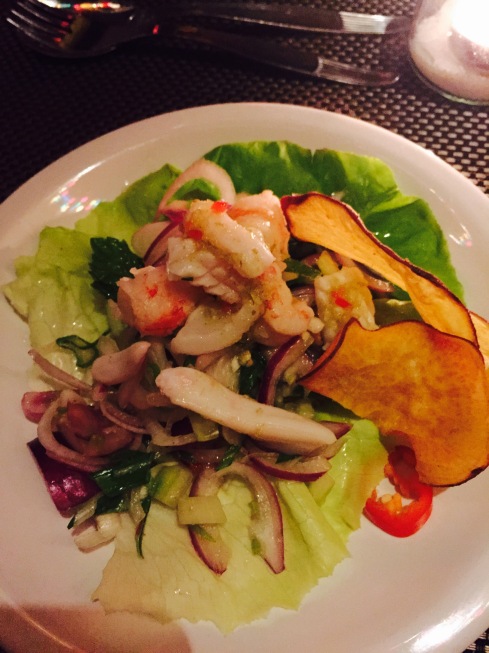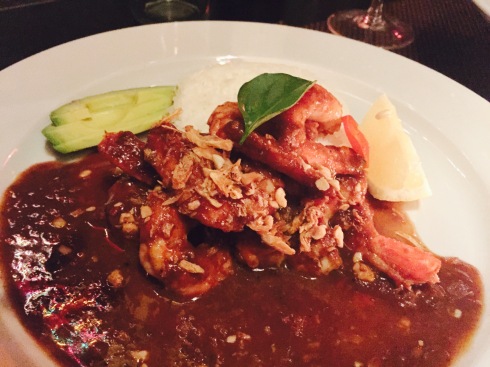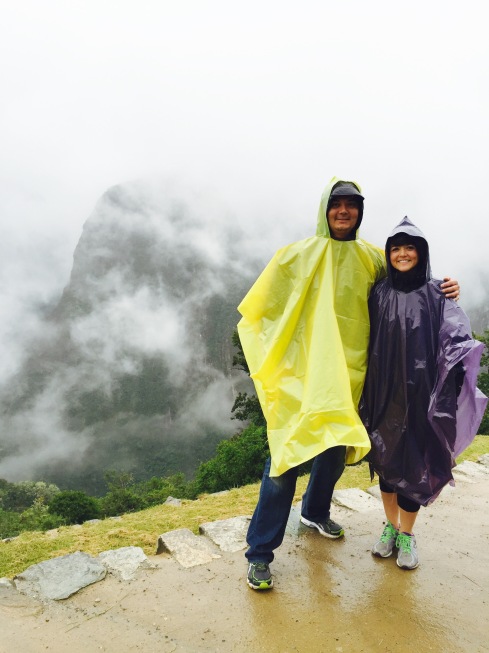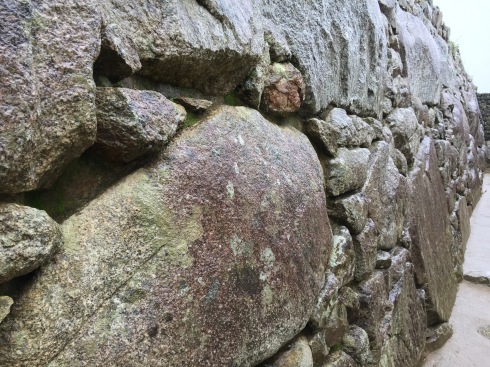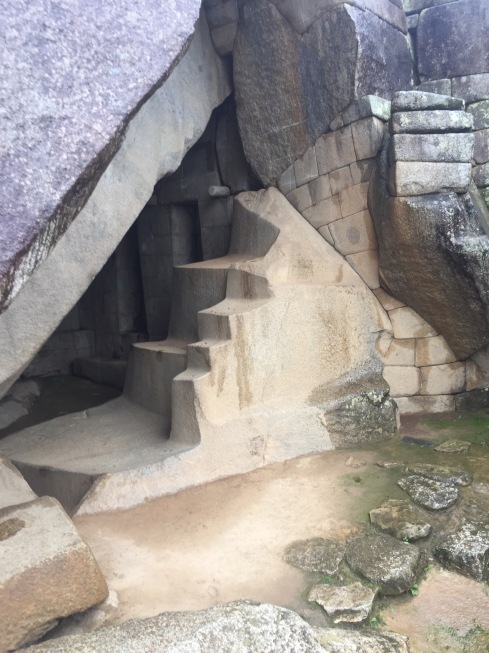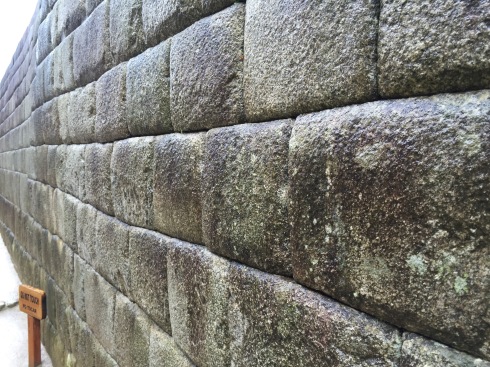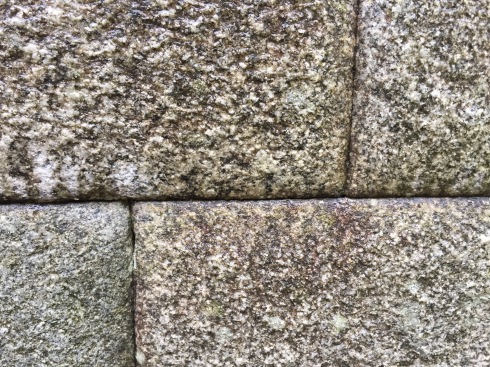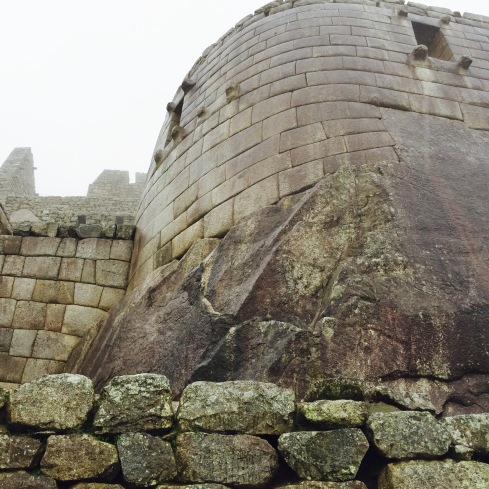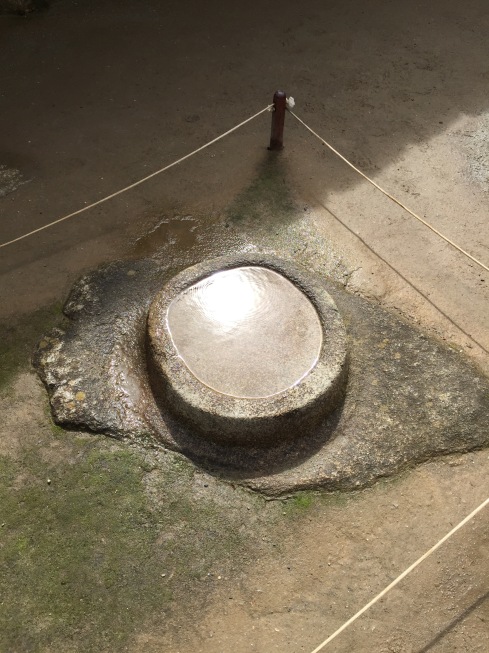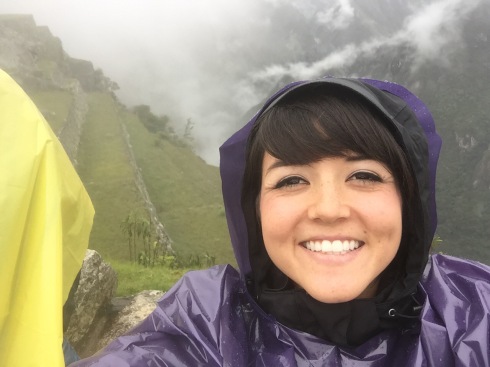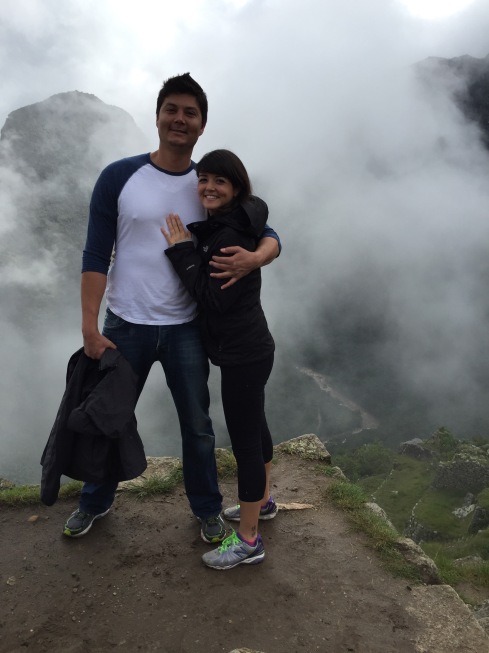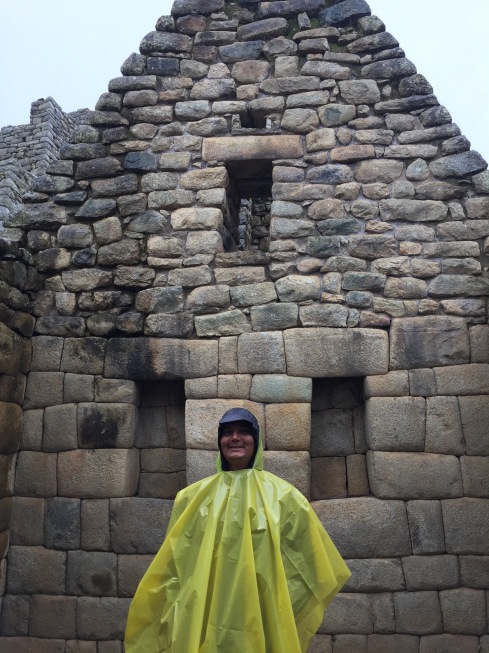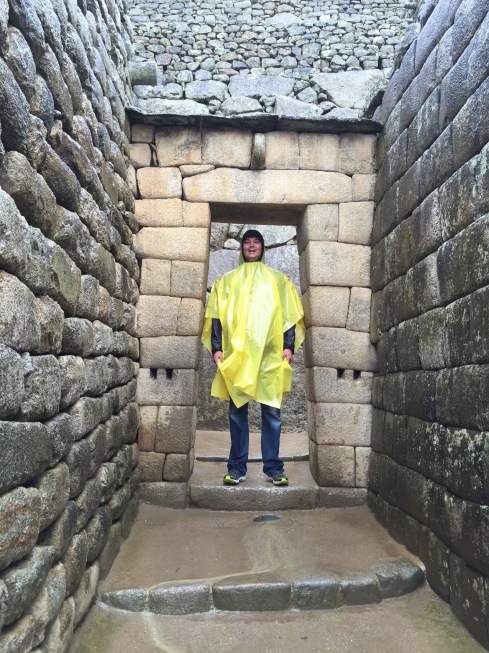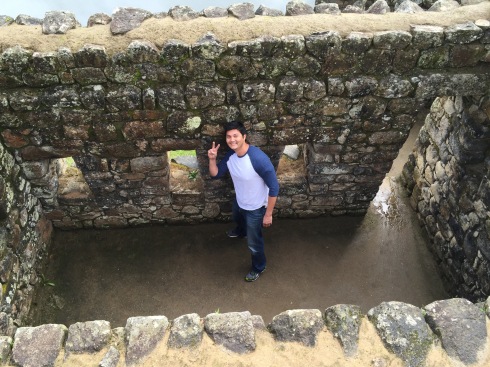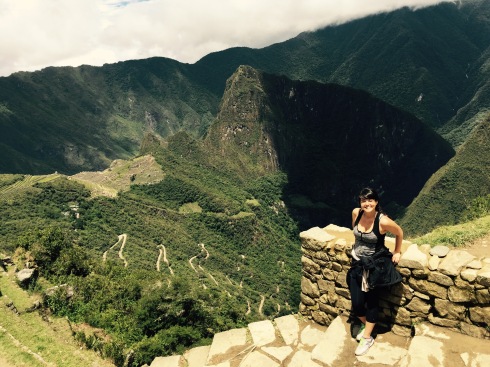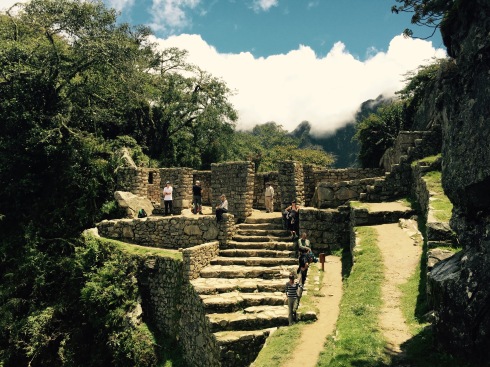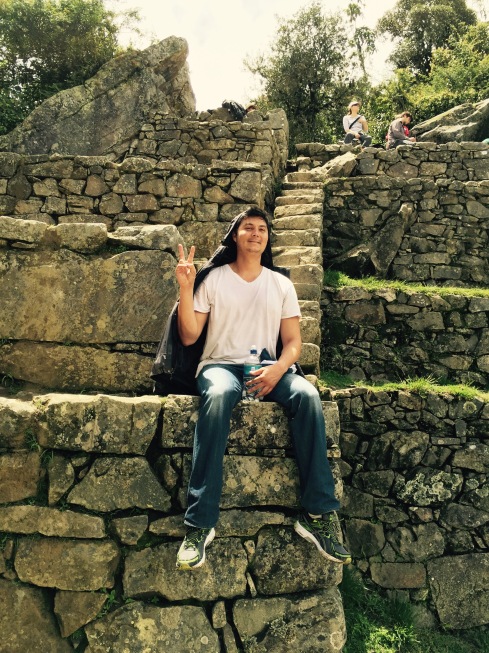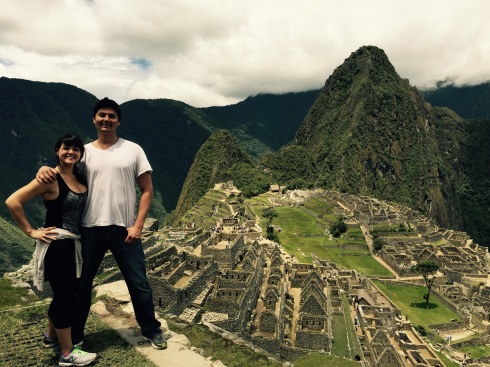For our first full day in Santiago, Chile, our AirBnB suggested that we partake in one of the free city walking tours of Santiago. It was a 4-hour tour and something I am so glad that we did.
The tour started in Plaza de Armas at 10am and all you had to do was look for the guys wearing red shirts with “free tours” screen printed on their back. There were two groups – one in Portuguese and one in English – I am pretty sure you can figure out which one we did. Our tour guide’s name was Franco. Now, a four hour talking tour is not something that probably sounds amazing to you, and normally, guide-led tours are not our jam. But if you ever come to Santiago, this tour is freaking fantastic. Our guide was funny and informative, but not in a museum, boring, facts-only kind of way – more in an anecdotal way with interesting facts about each place we stopped at to discuss. The tour is free, but there is a suggested 5,000 pesos ($8-10 US) donation suggested at the end. My opinion, definitely worth it.
So, the tour started in Plaza de Armas and our first stops were the various sculptures around the plaza.
This first stop was a statue of Pedro de Valdivia. He was a Spanish conqueror that “founded” Santiago in 1541. Six months later, the Mapuche, the indigenous people of the land, burnt it down. He started over, there was a lot of fighting back and forth, he was murdered a few years later – by the escaped Mapuche slave that he was trying to “civilize” and who eventually took all the Spanish war tactics to fight the Spanish from conquering any land further South than Santiago.
The Mapuche, according to our guide, although the largest indigenous ethnic group in Chile is now relatively disregarded. They are not stakeholders in any politics and have little voice.
This is a statue is for the Mapuche and is also in Plaza de Armas. According to our guide, it’s felt to be the “shut up and go away” statue since it was built to honor the Mapuche, but perhaps as a way for the government to say “hey, look what we did – now go away.”
Obviously, don’t know the full history here, so don’t think all my facts are perfect, just trying to share some of the Santiago history origins that we learned.
This statue is of Salvador Allende. He was the president from 1970-1973. He was a socialist, but wanted to do it the “Chilean” way – meaning not with guns and armor like Cuba, but over red wine. He wanted to help diminish the class differences between the rich and the poor. Obviously, this caused a lot of contention (guess which class wasn’t that intrigued by more equal distribution of wealth?) Ultimately, Allende accomplished nothing. The far left supporters wanted to go extreme and began being supported by Castro with weapons. The far right became supported by countries, such as the States. And effectively, he was at a standstill.
Then, on September 11, 1973 the military led a a coup to overthrow him, led by Augusto Pinochet, and stormed the presidential house.
There are still bullet holes in some of the statues and buildings around this building due to the fighting that occurred. After evacuating the building, Allende spoke on the radio to deliver his final words (“I believe in the destiny of Chile”) and committed suicide.
According to our tour guide, September 11 continues to be a day of fighting each year – with riots and protests and the like breaking out. People either hug or spit on Allende’s statue and the country remains politically divided.
After Allende, Pinochet took over the presidential office and led a dictatorship. In this dictatorship, many people had to flee the country (for not supporting Pinochet) and many others were murdered or tortured in various torture centers throughout the country. Pinochet also sent some business guys to the States, Chicago specifically, to learn about economic systems and brought to Chile the idea of living off credit.
Even after Pinochet was voted out of office, he remained politically active since whole in office, he rewrote the Constitution to protect himself. That Constitution is still active today.
Okay, that was the history part of my lesson. Sorry if some things are not completely accurate (again, just sharing what I learned from our guide so totally from his perspective), but I was rather surprised that Chile had experienced such a tumultuous and violent history in such recent times (the 70’s and 80’s!) Definitely never learned about that in any of my classes.
This is the biggest Chilean flag in the country. Guess where it was made? Nope, not China. Oregon. Weird, right? Didn’t know that Oregon was such a player in the flag-making business.
Now, the tour started to extend to exploring things to do in the city. But before that, we stopped for about a 30-minute rest. This break was much needed. We stopped in Barrio Lastarria. We went to a cafe in an art museum, but had the option to walk around if you wanted (no one did). After that, we were shown the two things that Chilean hate about Santiago:
This river. It’s not actually dirty, it’s just muddy. It’s carrying all the dirt down from the Andes Mountains.
This tower. Look at it closely. And consider it was built in the 1990’s. It was built by a cell phone company who wanted the building to be in the shape of the “modern” technology of a cellphone – check out that antenna and the battery in the back. Freaking fantastic.
And, lastly, here is the house of the famous Chilean poet – Pablo Neruda.
According to our tour guide, Neruda was a complete eccentric. This is actually the house of his mistress, which he moved into once he divorced his wife. It’s also all boat-themed. He loved the ocean, but was afraid of it – so decorated his homes to be nautical so he could still feel as though he was sailing the ocean. He also loved food and wrote an ode to the onion.
Alright, so the tour also showed us places to eat and bars to drink at – but I will share that in another post about the foods and drinks we did have and the things that I wish we had time to do!



